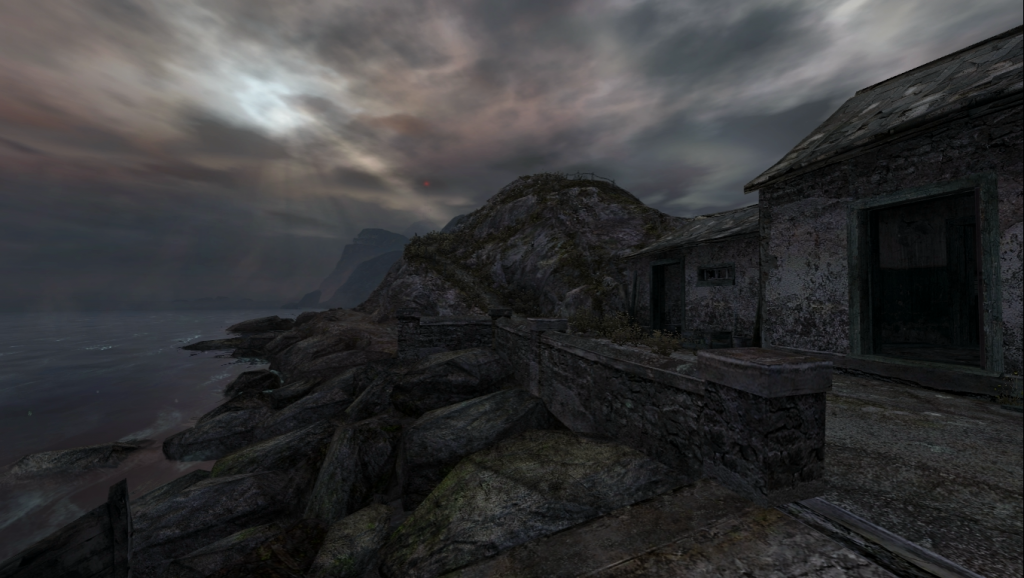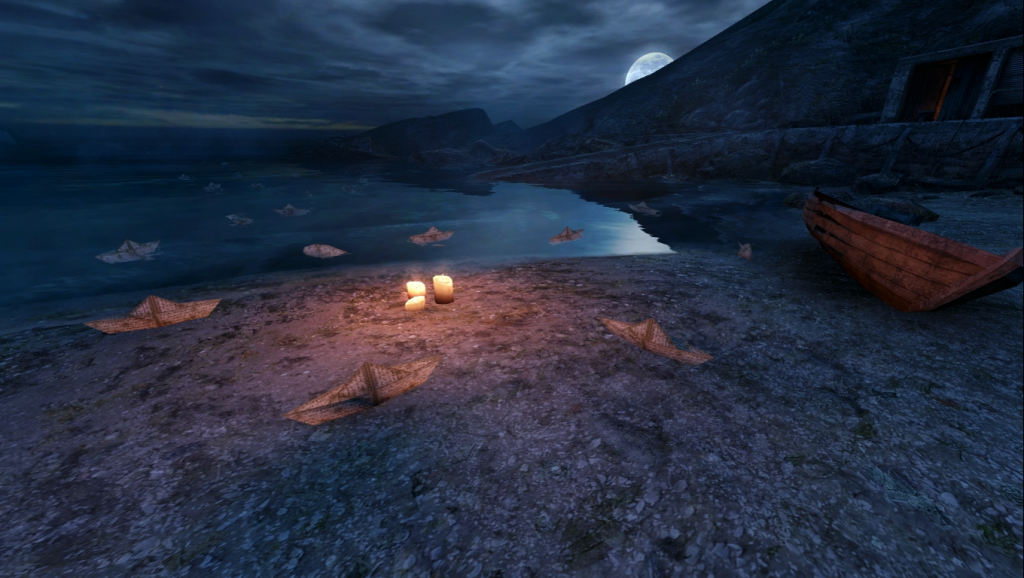The art of video games is that there are so many kinds, from first-person shooters to horror-survival games, from point-and-click adventure games to sports games. Because of all these different types of games, it’s hard to define the term, but there is always some form of interaction from the player. Video games therefore can also be called interactive stories, where you walk through an imitative world, uncovering its history. Dear Esther is such a video game; a story driven experience, where you delve deeper into the story by following a specific path. It shows that the art of video games is also hidden in the way it tells a story.
Dear Esther started out as a mod for Half-Life 2, but was later turned into a full game by The Chinese Room. The game is purely story driven. The only “goal” you have to complete is uncovering the story.
In Dear Esther you explore an uninhabited Hebridean Island west of Scotland. As you walk across the islands to your final destination, you are guided by voice-overs in the form of letters to somebody named Esther. It becomes clear you are hearing the voice of a man who lost his wife in a fatal car crash. He is overcome by guilt and wants to create a memorial to make sure she will never be forgotten. Across the island, you will find clues to what happened in the form of wall paintings, little props and texts. There are for example structural formulas written on walls and throughout the caves. The man saw these in a magazine while he was waiting for the results of his wife’s surgery after the car crash. In short, everything comes back to Esther.
At the start of the game, it seems like you just arrived on the island. The voice is talking about the times he and Esther visited the place and how it was so full of life. Now it is empty and barren, no living creatures to be found. The first thing that stood out to me was the beauty of everything, it all looked so real. The wind whistling past your ears and the sun shining behind a layer of clouds. When playing with headphones it feels like you are really there. The island looks deserted and dead, but it is also evident that it used to be a beautiful place, with little lambs frolicking in the grass and birds speeding through the sky. At the far end of the island, you can spot a radio tower which will be your final destination…
After taking your first few steps into the world of Dear Esther, it will become clear that walking is the only thing you can really do. You cannot jump or pick things up and a flashlight will turn on and off by itself. This can be a bit frustrating in the beginning since it limits the ways you interact with the world. It does serve a purpose, though. When you get used to the fact that you can’t move objects or pick them up, your attention will shift to what you see and hear. There will be nothing to distract you from immersing yourself fully in the experience.
The voice-overs are what guides you in uncovering the whole story, and they really are the key feature and most interesting part of Dear Esther. The voices are sometimes accompanied by beautiful music, sad but magical, a perfect fit for your journey. You walk around and every now and then the voice will read letters, giving you clues or explaining aspects of what has happened. The letters themselves are folded up as boats floating near the coast. The man had written down everything he still wanted to say to his wife, even though she’ll never be able to read them.
I think Dear Esther shows that the art of video games, does not only lay in the diversity of the media, but also in the way it tells a story. Everything in Dear Esther serves to make for a beautiful and touching experience. The realistic graphics, walking as the only form of interaction, and the guiding voice and music; they all interact to benefit the story. They are all connected, just as is everything on the island. Dear Esther is a game which you can play over and over again and which will become better every time. It is a game that interacts with you on an emotional and rational level. You interact with the game in the sense that you are moved by it and that you are constantly trying to place all the pieces of the story together in a fitting pattern. When replaying it, you will discover more and more and will be able to see little connections and interactions between the different aspects of the game. This may seem abstract, but to fully understand it, you should experience it for yourself. There are just so many little details that make this game even better.





 …WOOLY DESERVES BETTER LOL!
…WOOLY DESERVES BETTER LOL!